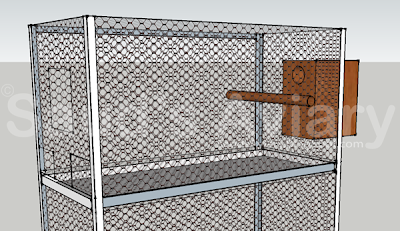5.1 The Genetic Calculator
In the last chapter we used the Punnett squares method to predict outcome in cases where birds were carrying multiple mutations. We saw that the Punnett squares method increased in complexity as the number of mutations in the parents increased. If the parents have a single mutant gene the Punnet Squares method has 4 cells. With two mutant genes involved, it can have up to 16 cells and with three the number could go up to 64. We therefore need a simpler method to work out the outcomes in such cases. Fortunately, there are genetic calculators that can be used in such cases. Here we will discuss the use of Gencalc (http://www.gencalc.com/). If you have understood what we discussed in earlier chapters, then this should be very simple for you. Even if you got lost somewhere along the way it should still be possible for you to learn to use the genetic calculator.
On the main page, select the species that you want to work with. This will open up the calculator page for that species. For the purpose of this tutorial we will use the Indian ringneck (listed under Psittacula Parrots) as an example. The calculator looks like this

The first column lists the symbol for the mutation; the second column lists the name of the mutation while the third column shows the inheritance mode (dominant recessive etc) of the mutation. The column 1.0 is for the male and 0.1 is for the female. Each row in the calculator is a primary mutation. Using the calculator is very simple. We just select the relevant options under 1.0 and 0.1 and click “Generate” to see the results. If no options are selected under the male or female then this means a pure normal bird carrying no mutant genes.
Lets us look at a simple example. A blue male paired to a green split blue hen. Select blue under visual 1.0 for the male and splits to blue under 0.1 for the female. (See fig below)

Click on generate and we get the following result.

The male offspring are shown under 1.0 and we see that 50% of the males are blue while the other 50% are green split blue. Similarly the female offspring are shown under 0.1.
That was fairly simple. But how do we select an Albino in this calculator? Why isn’t the albino listed in any of the rows? This is because albino is not a primary mutation but a combination of blue and ino. We will need to select these together to input the information in the calculator. In the next chapter we will list the primary mutations that combine to produce the secondary mutations familiar to us. This will enable us to use the calculator with multiple mutations.


Comments
Post a Comment